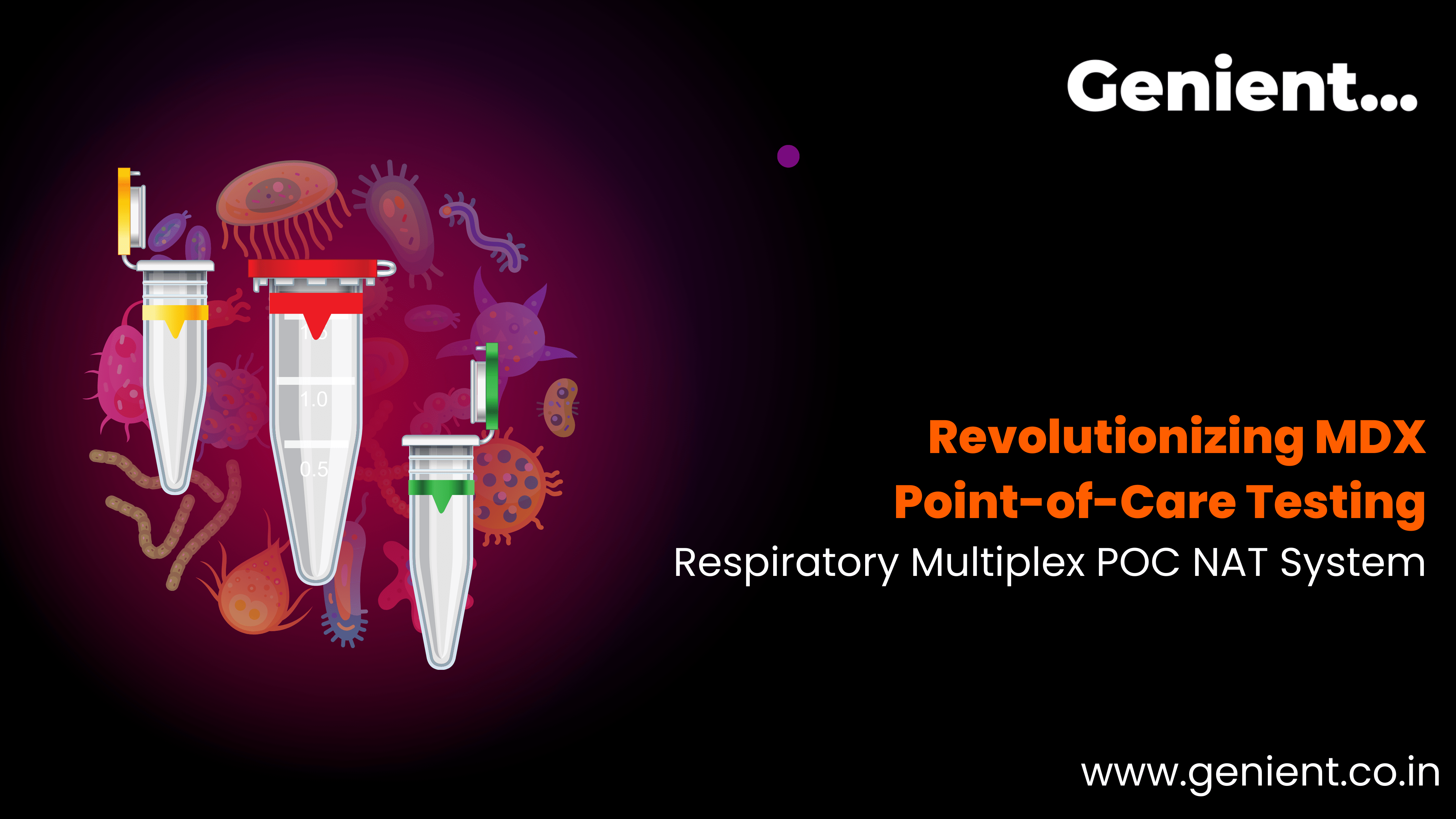Revolutionizing Point-of-Care Testing with Respiratory Multiplex POC NAT System

By Genient
In today’s fast-evolving healthcare landscape, rapid, reliable, and decentralized diagnostics are critical to addressing patient needs effectively. Genient Technologies is proud to partner with cutting-edge innovators like Bioeksen to bring advanced solutions like the Respiratory Multiplex POC NAT System to healthcare providers, reshaping the way point-of-care (POC) diagnostics are performed.
What is the Respiratory Multiplex POC NAT System?
The Point-of-Care Nucleic Acid Test (POC NAT) System developed by Bioeksen represents a leap forward in molecular diagnostics. Designed for use in various healthcare settings, from hospitals and clinics to remote field operations, this system offers quick and accurate pathogen detection. It empowers clinicians to diagnose and treat infectious diseases more effectively by providing real-time molecular results at the point of need.
Key Features and Benefits
- Rapid Turnaround Time: The Respiratory Multiplex POC NAT System delivers results in under 30 minutes, enabling healthcare providers to make swift clinical decisions that improve patient outcomes.
- User-Friendly Design: This system requires minimal training and provides a fully automated testing workflow, making it an ideal choice for busy clinical environments and non-laboratory settings.
- Versatile Applications: The system is capable of detecting a wide range of pathogens, including bacteria, viruses, and other microorganisms, making it suitable for infectious disease diagnosis, outbreak management, and more.
- Compact and Portable: The Respiratory Multiplex POC NAT System’s compact design makes it easy to transport, enabling healthcare providers to extend molecular diagnostic capabilities to remote locations without the need for sophisticated lab infrastructure.
- High Sensitivity and Specificity: Utilizing advanced nucleic acid amplification technologies, the system ensures that even low levels of target pathogens can be detected with high accuracy.
Addressing Coinfections and the Risks They Pose
Coinfections with respiratory pathogens significantly increase the risk of intensive care unit (ICU) admission and death. This is particularly critical during seasons when respiratory pathogens such as SARS-CoV-2, Influenza, and Respiratory Syncytial Virus (RSV) are widely circulating. To address this, Bioeksen presents Respiratory Multiplex POC-qPCR panels that test for the most prevalent respiratory pathogens. These panels play a crucial role in identifying coinfections early, allowing clinicians to take timely and informed actions.
A concerning trend has been observed in children, where coinfections, particularly involving Group A Streptococcus (GAS) and viral pathogens, have led to an increase in severe outcomes and related deaths. According to recent studies, invasive GAS infections have surged, especially when children are coinfected with viruses such as Influenza or SARS-CoV-2. GAS is the only cause of pharyngitis in children for which antibiotic treatment is strongly recommended. Clinicians must test for GAS alongside common respiratory viruses to reduce the risk of severe or immune-mediated complications in pediatric patients.
Currently, >90% of community-acquired respiratory viruses are caused by five key pathogens: SARS-CoV-2, Influenza, RSV, Rhinovirus, and Adenovirus. By using the POC-qPCR panels from Bioeksen, clinicians can swiftly detect and differentiate these pathogens, aiding in the targeted treatment of infections and minimizing the risk of complications.
Why Respiratory Multiplex POC Diagnostics Matter
The increasing demand for rapid and reliable diagnostics, especially in the wake of global health crises like COVID-19, has underscored the importance of point-of-care solutions. The ability to perform molecular tests outside of traditional laboratory environments significantly enhances healthcare accessibility, particularly in underserved areas. This can reduce the time to diagnosis, minimize hospital stays, and ultimately save lives.
Genient Technologies’ Commitment to Innovation
At Genient Technologies, we are committed to enhancing healthcare outcomes by bringing world-class diagnostic solutions to the market. By integrating innovative platforms like Bioeksen’s Respiratory Multiplex POC NAT System into our portfolio, we ensure that healthcare professionals have access to the best tools for delivering fast and reliable results, no matter where they are.
We believe that the future of diagnostics lies in portability, speed, and precision—and the Respiratory Multiplex POC NAT System exemplifies these values. Whether in urban hospitals or rural clinics, this technology is set to transform how healthcare providers diagnose and manage diseases, ultimately improving patient care across the board.
Conclusion
As we continue to push the boundaries of what's possible in molecular diagnostics, Genient Technologies is excited to support solutions that enhance the speed, accuracy, and accessibility of healthcare. The Respiratory Multiplex POC NAT System is a game-changer, making advanced diagnostics available at the point of care and contributing to more effective, timely medical interventions.
Stay tuned as we bring more innovative technologies to the forefront, redefining how healthcare providers approach diagnostics.
Related Articles

Importance in India's Research, Diagnostics, and Hospital Ecosystem
Biosafety Level (BSL) laboratories play a crucial role in safeguarding public health by studying and containing dangerous pathogens.
Read More
Lorem Ipsum is simply dummy text of the printing
Lorem Ipsum is simply dummy text of the printing and typesetting industry. Lorem Ipsum has been the industry's standard dummy text ever.
Read More
Lorem Ipsum is simply dummy text of the printing
Lorem Ipsum is simply dummy text of the printing and typesetting industry. Lorem Ipsum has been the industry's standard dummy text ever.
Read More